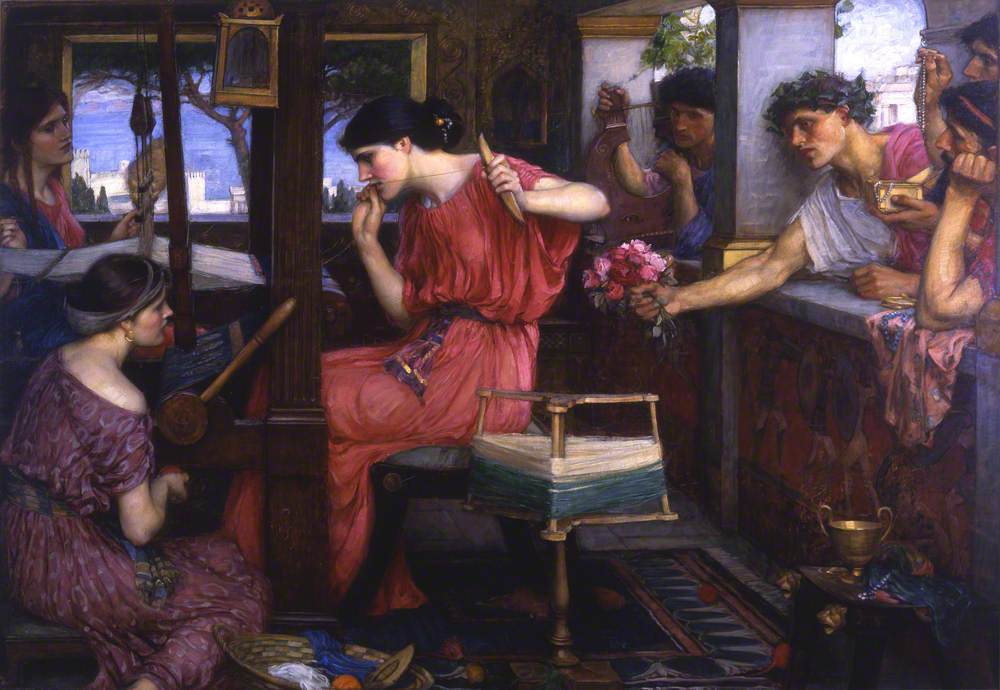
Penelope and the Suitors by John William Waterhouse, 1849-1917. 1912. Oil on canvas. H 129.8 x W 188 cm. Collection: Aberdeen Art Gallery and Museums, accession no. ABDAG003035; purchased, 1912. Image kindly made available for reproduction on Art UK under the terms of the Creative Commons Attribution-NonCommercial licence (CC BY-NC).
Penelope is a symbol of long-suffering patience. She waits many years in Homer's Odyssey for her husband Odysseus to return from fighting in the Trojan War. His voyage is a long and difficult one, and in the meanwhile she is beset by many suitors. To keep them at bay, she promises to marry one of them only when she has completed the shroud she is weaving for Odysseus's father. But, famously, each night she secretly unravels all the weaving she has done in the day, so that the shroud remains incomplete.
The theme of the loyal wife was a popular one, and other artists treated the subject as well. Waterhouse's success with it an be gauged from some background information. The curator of the Aberdeen Art Gallery stoutly rejected criticism of the price paid for the painting. He revealed that the gallery was charged less than a potential private buyer — and, anyway, the work was a masterpiece: "What Mr Waterhouse has done is to take a classic myth ... a theme as far removed from reality as from ugliness ... he has infused into his presentation of it that note of romance and that individual point of view which we look for in the work of a great artist" (qtd. in Hobson 96). Hobson himself calls Penelope and the Suitors "one of Waterhouse's major paintings" (96). — Jacqueline Banerjee
Related Material
Bibliography
Hobson, Anthony. The Art and Life of J. W. Waterhouse, R.A.. Oxford: Phaidon/Christie's, 1989.
Created 22 August 2021